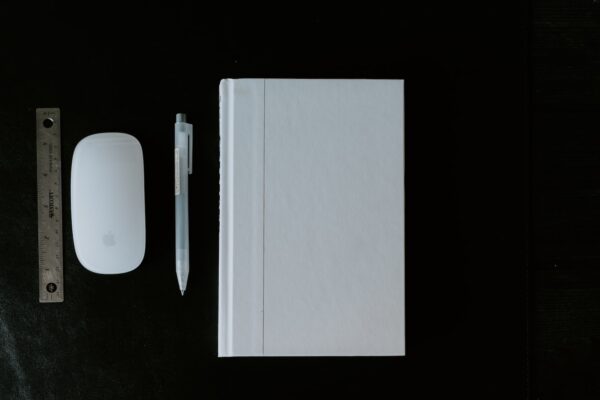 After my experience with the publisher of my first book, Mushroom: A Global History, I decided I wouldn’t go the traditional route again.
After my experience with the publisher of my first book, Mushroom: A Global History, I decided I wouldn’t go the traditional route again.
It wasn’t because the publisher did anything bad. Au contraire. They did an amazing job: high-quality paper, vivid interior colors, excellent editing and fact-checking, proper layout. The cover left something to be desired, yes, but even that turned out to be acceptable because, after all, the book is part of Reaktion Books’ Edible Series on single-subject food topics.
No, the issue lay with me.
I just couldn’t get my head around the three-year process from finished manuscript to finished book. A niggling thought nagged at me: I could be dead before any fresh-off book appeared on my porch, packed in a tight cardboard box.
Since the day I saw the first copies of Mushroom, I have self-published seven books, and am soon to release the eighth.
It’s been a learning experience, though, I’ll grant you that.
Despite the 300 million self-published books in 2022 alone, self-publishing still gets the hairy eyeball from many gatekeepers in the literary world
Knowing this, that many in the publishing industry look down their noses at self-published books, doesn’t stop me from self-publishing my own books. Why? Even though many literary awards will not accept self-published books?
The harsh truth is that most self-published books LOOK amateurish.
It behooves you, as a writer/publisher, to make your books look as professional as possible. And that takes something more than whipping up a Word file and choosing a favorite photo or piece of artwork for the cover.
The following list sums up some of what I’ve learned, both the easy way and the hard way.
Publisher Name (Imprint):
Create an imprint name for yourself as the publisher—DO NOT use the equivalent of Create Space, your name, or KDP as the imprint on the title page or the verso. It’s true that most readers don’t pay attention to the name of the publisher, but it looks more professional to use a professional-sounding moniker. In my case, after a month in the Arizona desert, I hit upon a name for my imprint: Turquoise Moon Press, in honor of Native American turquoise jewelry and the stunning full moon I saw rising over the Catalina mountains one night. (See more on this topic under ISBNS and Barcodes in Part 2.)
Cover:
Readers DO judge books by their covers. Trends vary in covers over the years, but right now the style leans toward the colorful. Poorly designed book covers offer no hints as to the contents of the book, especially when accompanied by dull, bland colors, further handicapped by inappropriate, widely varied fonts.
Your cover needs to convey an idea—and you must find an image that fits that idea.
Some authors, as in the case of the publisher of my first book, choose to use a similar design for all their books, making them instantly recognizable and associated with the author (or publisher), branding in other words. You see an example of this with some of writer/rocker Patti Smith’s books. Take a look at some suggestions for book cover design HERE.
But most important of all—and this point pertains basically to your entire book—unless you are incredibly skilled in the graphic arts, hire a graphic artist who can do both the cover and the interior layout. It makes all the difference to have someone on board with good graphics skills who can visualize the cover and execute it well. And who uses a more sophisticated layout application such as InDesign.
 Layout:
Layout:
But the cover isn’t the only dead giveaway screaming “self-published!” The interior layout is important, too.
The traditional book usually consists of a frontispiece page, the title page, the verso/copyright page, and any endpapers.
Many of the following issues often signal that a book is self-published:
- Typography problems—too many varied fonts
- No justification of text
- Bad/annoying hyphenation
- Too narrow space between lines
- Extra space/return between paragraphs, leaving white space where there should be text
- Margins too wide
- Not starting chapters on facing (right-hand) page
- Headers and footers missing or inconsistent
- Widows & orphans—partial single sentences that end up on the next page
Check out this introduction to book layout. And be sure to study the layout of books that you admire. For ideas and for inspiration.
Blurbs and Endorsement Quotes:
There’s really no difference between blurbs and endorsement quotes, those one-line, or longer, quotes that appear on the front and back covers of books, and many times inside the front cover as well. However, a blurb generally consists of more text than an endorsement quote.
How do you get these gems, which—if from the right expert or well-known writer—can propel your book into the hands of more readers? Simple. You ask. And keep on asking. But be prepared to return the favor whenever possible.
To be continued … February 15, 2023.
[Editor’s note: WAG would love to see articles on any and all topics of interest to writers. Please send your ideas or finished pieces to Cynthia D. Bertelsen at BlogEditor@writersalliance.org for consideration. Remember: these posts are more than just posts, for they are actual articles and can be cited in your CV/résumé in the same way you would a short story, essay, or any other writing credit you may possess.]

Bonnie T Ogle
This is fantastic! I’m going to sit down and review my own books. (I did have it professionally typeset and hired professional for cover, but even they can and do make mistakes, since they’re using my input. Thanks, Cindy. Can’t wait for next episode!
Jenifer Dearinger
Excellent post. I learned a lot about formatting your self-published book to make it as professional as traditional publications. I especially liked the list of possible issues that one can easily avoid, such as too many different fonts. I think if you’re going to self-publish, do a lot of research! Go to libraries and bookstores. See how books in your category are formatted and what makes for an eye-catching cover.
Cynthia Bertelsen
All good suggestions for seeing how the other guys do it!
Cynthia Bertelsen
Thank you, Bonnie. Your books are terrific.
Amber Lee
Thank you for the detailed guidance!
Cynthia Bertelsen
Thanks, Amber, I’m sorry I didn’t see your comment sooner!